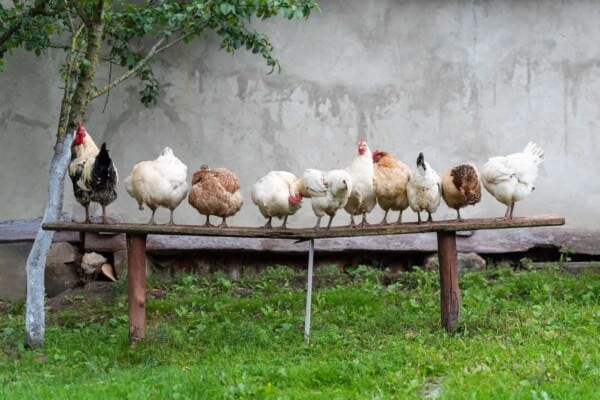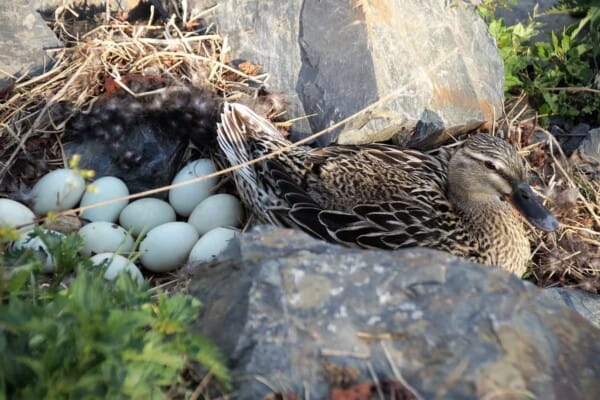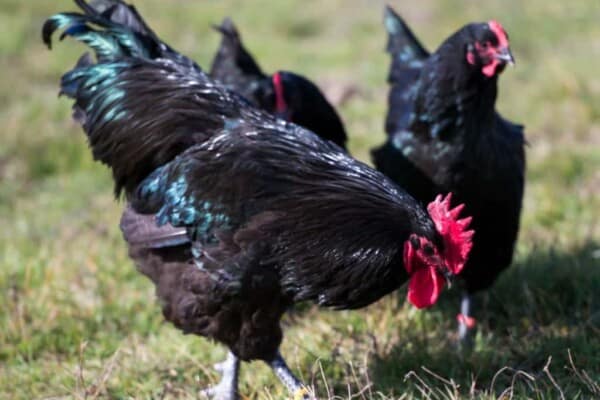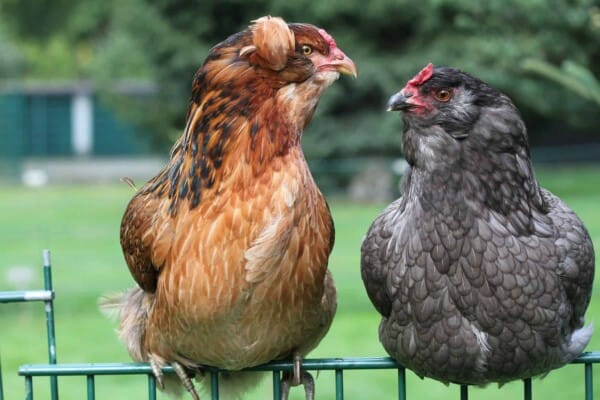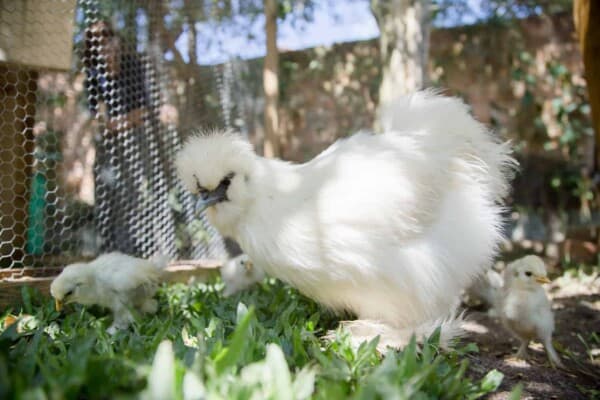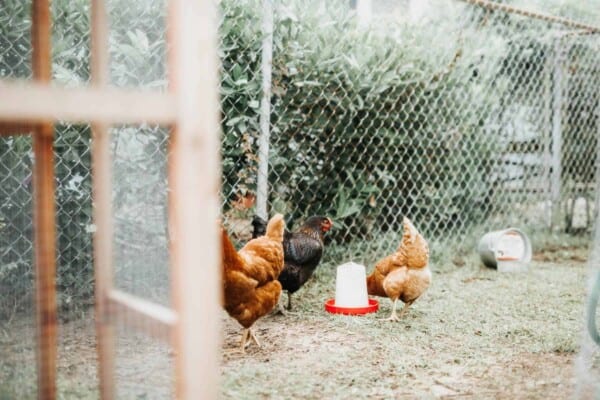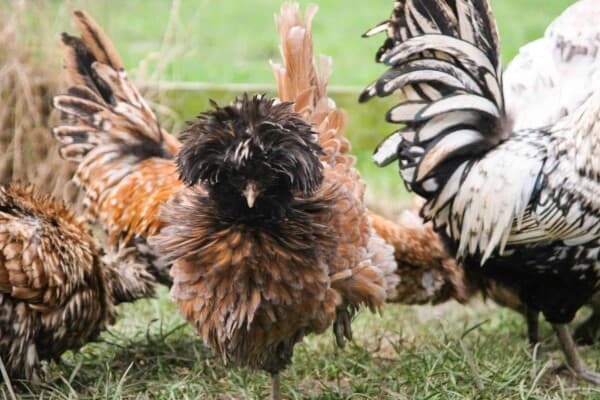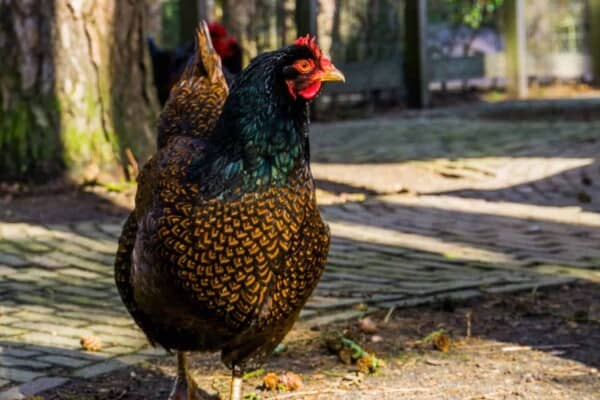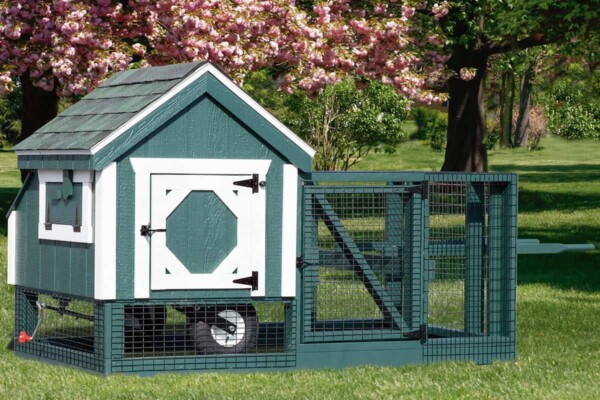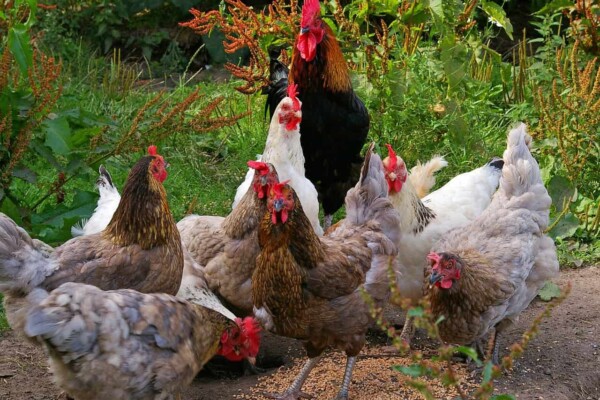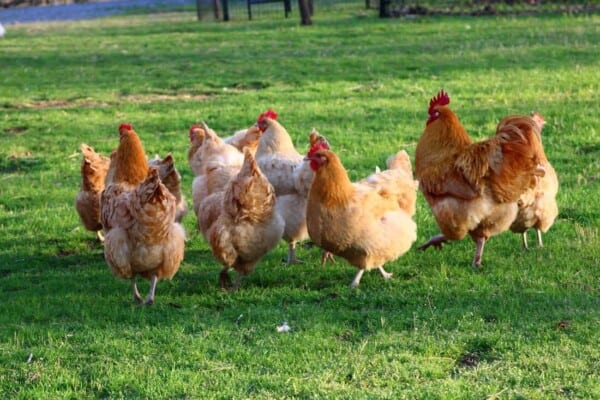Guinea Fowls may be some of the most misunderstood birds out there simply because over the course of history nobody seems to have really understood what they were all about and specifically why they couldn’t be tamed all the way.
These birds have always wanted one thing and one thing only, and it was always the complete opposite of what the Romans had in store for them. While the Romans wanted to tame them and turn them into pets or food, the Guinea Fowls always wanted to be free above all else.
That’s right, while this may not be the smartest bird out there, Guinea Fowls have always had that certain wilderness to them that is just impossible to get rid of.
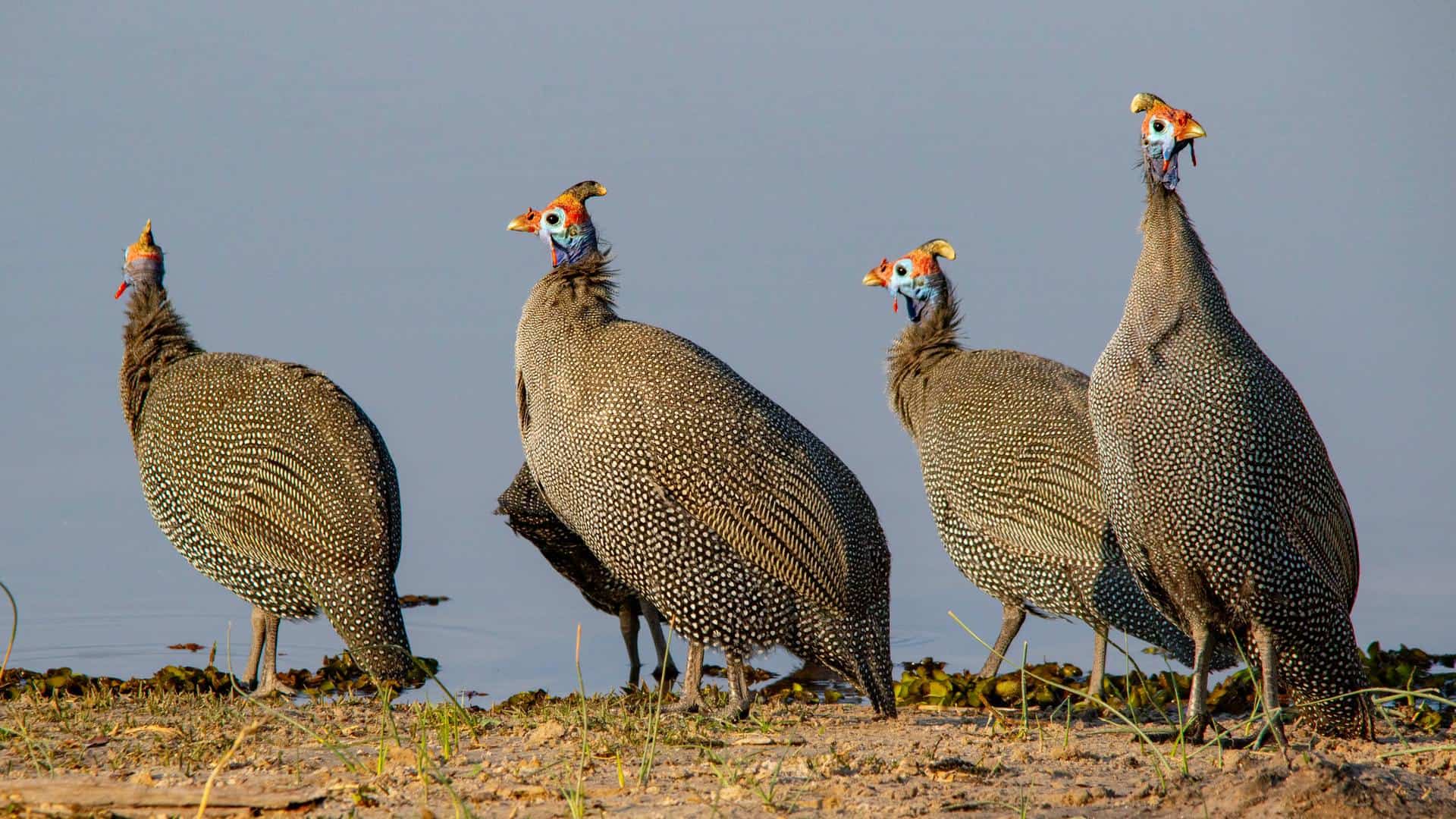
You can even tell from the way that they look and how they carry themselves that they’re quite unique and to top it all off while their behaviors may seem a bit erratic, when it comes to pest control, they’re pretty much unmatched out there.
On top of that, they are also very good at egg laying and while definitely wilder than other birds out there, they also have a certain fondness to them that is very hard to find in any other bird out there.
So, in order to really shed some light on this wondrous creature we decided to bring you a complete guide on how you should be raising them and more specifically, everything that you need to know about them before and after your purchase.
With that being said, let’s start off with a little bit of quick trivia about the Guinea Fowls, so let’s focus on:
The History of the Guinea Fowls
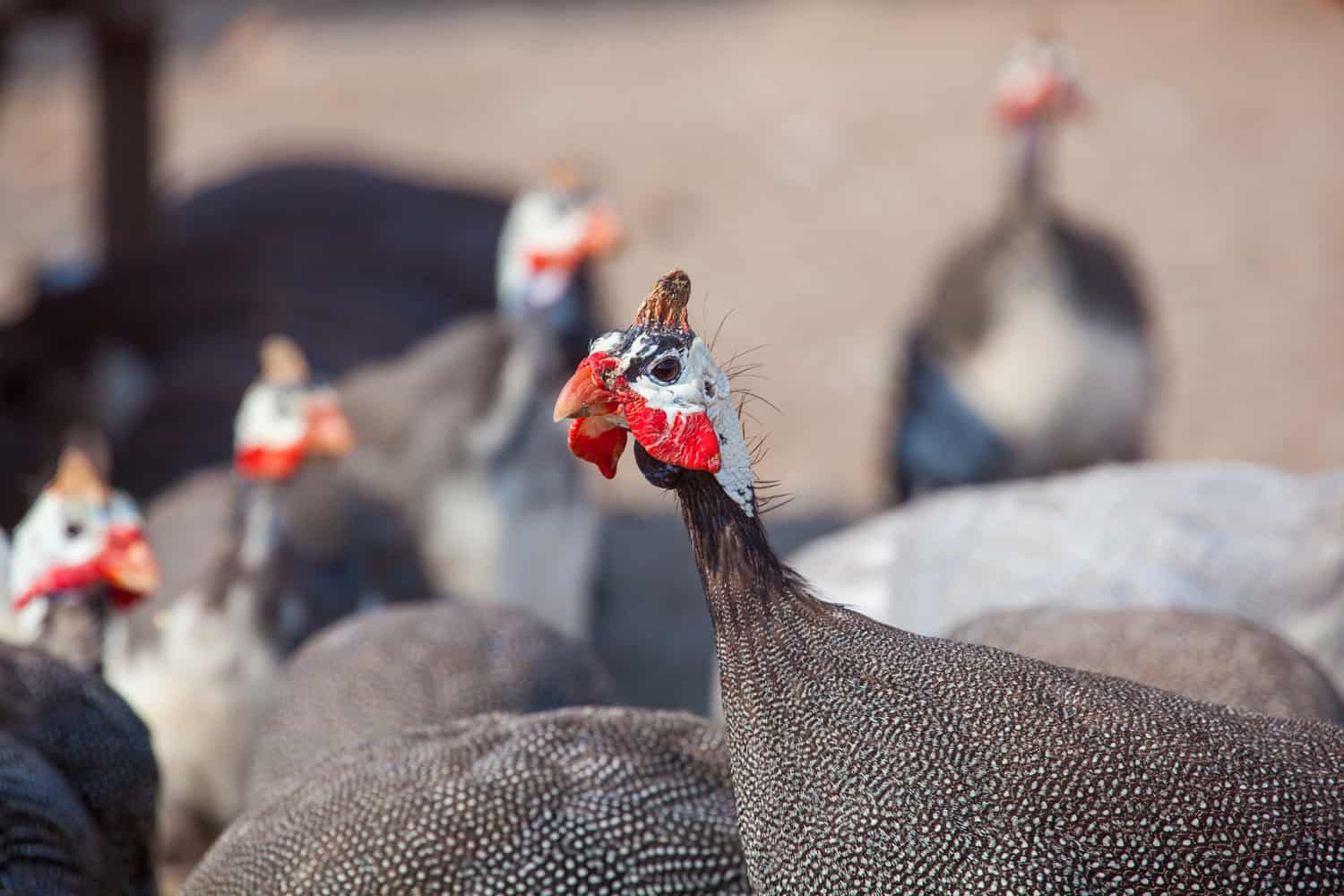
Guinea Fowls are known to be a part of the Numida meleagris family, but just in case you’re not interested in old terms that sound like they were pulled out of an ancient scroll, you should know that they’re mostly related to pheasants, turkeys and pretty much any other fowls out there.
As we briefly mentioned previously, guineafowls were brought to us by the Romans all the way from ancient Greece sometime around the 5th century BC. They were brought to us from their African campaigns and despite all of their efforts to domesticate them, they still pretty much failed since Guinea Fowls are still very much so considered to be wild birds for the most part.
They can be raised, but they should never be treated the same way you would treat a random chicken or turkey, they are a lot more violent and they scare off way easier than any other domesticated bird out there.
Back in Africa, the Guinea Fowls would run around in large flocks, but as far as Europe is concerned, the 14th century is where things started to pick up as more and more of them were introduced into the landscape through the early American settlers and their slave ships.
Guinea Fowls Appearance
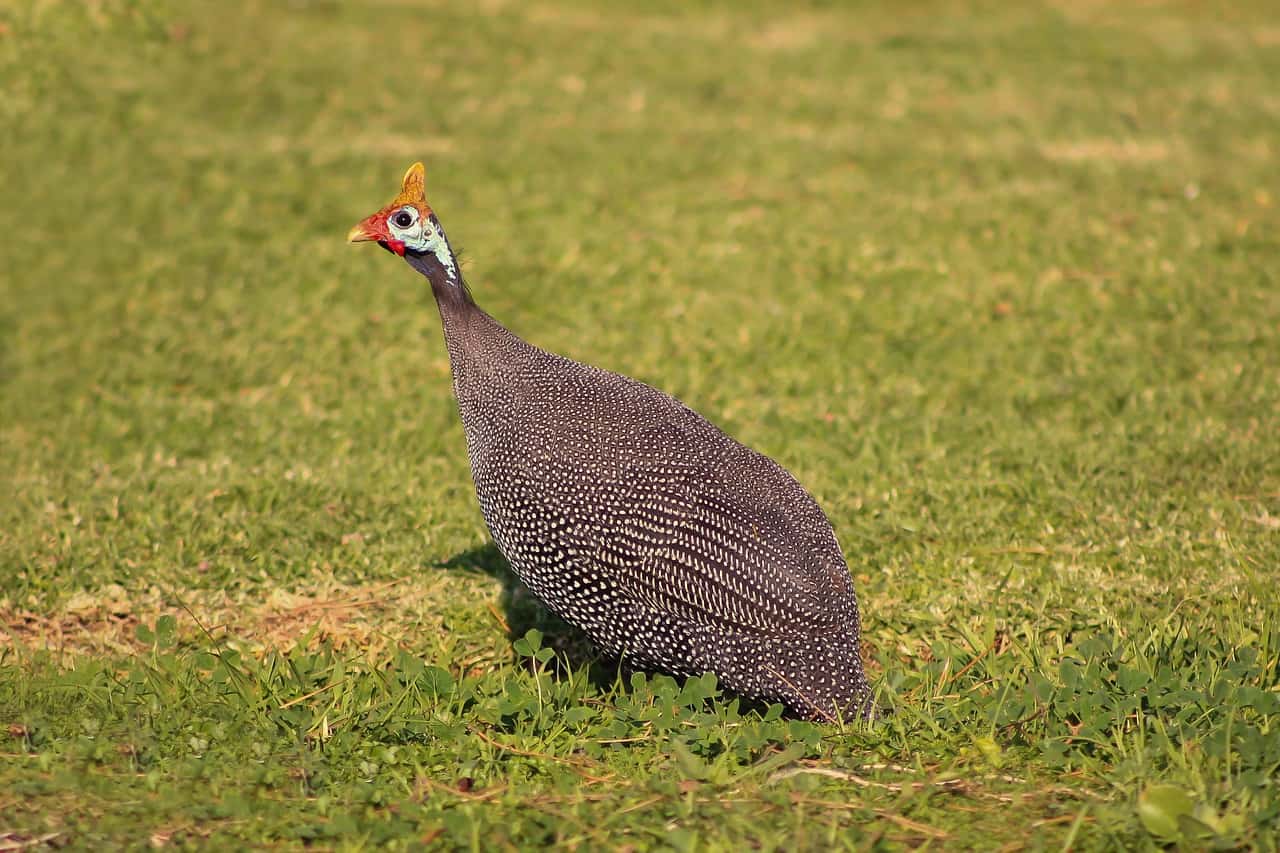
While there may be quite a handful of different types of guinea fowl out there, the one that you will see pretty much everywhere is always going to be the helmeted guineafowl simply because it is by far the most domesticated one, we can think of.
Other than this type though you will also find the following:
- The white-breasted fowl – This one is predominantly found across West Africa, and despite all of the support that it got from the world, it is still considered to be a vulnerable bird
- The black fowl – This one can usually be found around central Africa
- The vulturine fowl – This is by far the largest fowl you will find out there, and while it is also extremely difficult to tame, it is also considered to be the most stunning type of fowl out there
- The helmeted fowl – As we mentioned previously, because of how easy it is to tame, the helmeted fowl is the most common type and it is known for having that central knob on its head which gives it its signature nickname
- The plumed fowl – One of the rarest types out there, you can find it around central Africa for the most part although it is quite rare to see one in the wild
- The crested fowl – This is the one that you don’t want to see out there simply because of how aggressive it is. This type is known to chase everyone around including its own owners from time to time
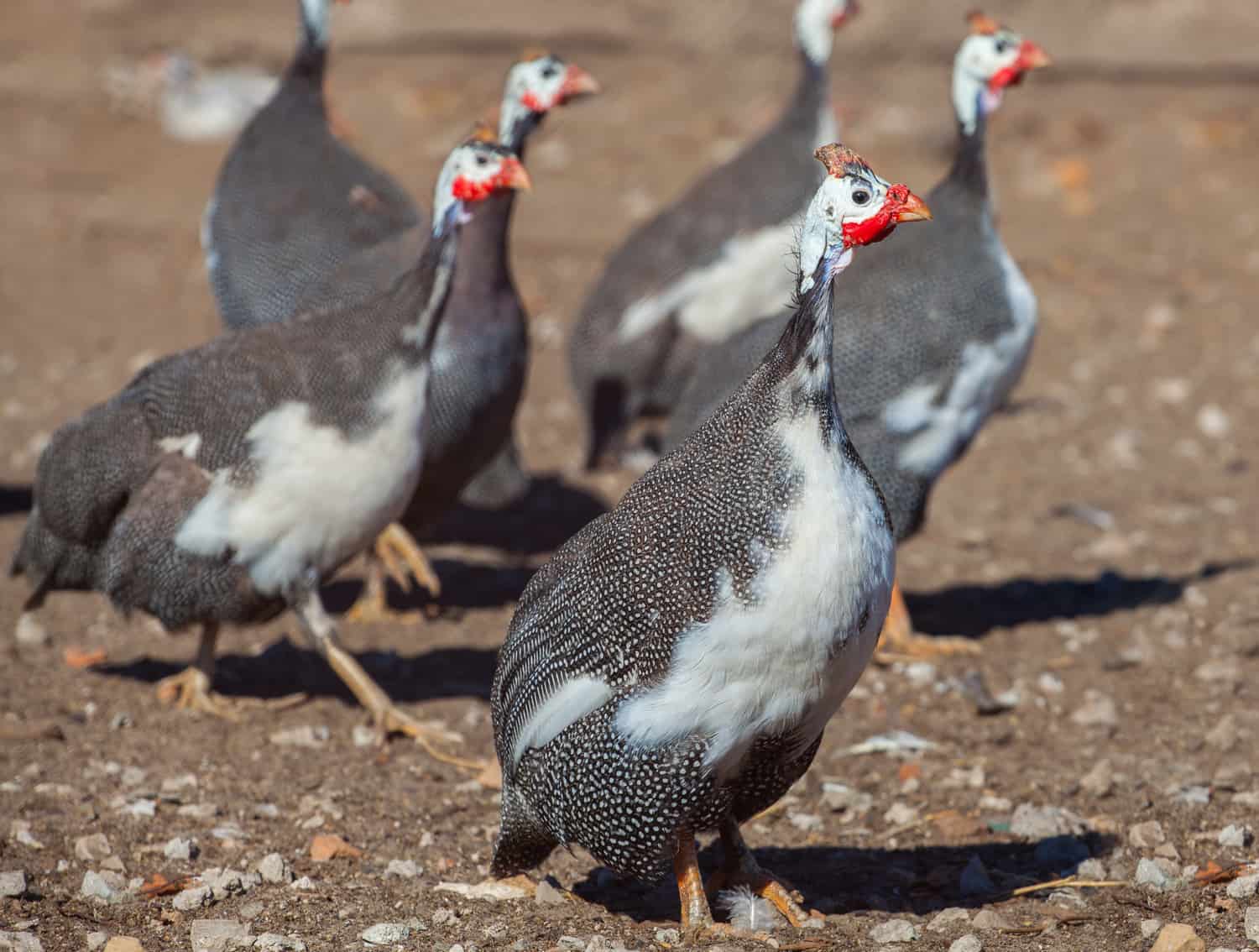
As far as general looks are concerned though, every Guinea Fowl comes in its own different shade and color. You can find a pearl fowl, a white one, a royal purple one, a coral, chocolate or even bronze sometimes. While many of these colors may not be recognized by the actual official standards, you do have pretty much every color under the rainbow on the fowl’s feathers.
As far as the US is concerned though, the helmeted Guinea Fowl is pretty much the only one that can be found in most shops, and as far as official colors go, pearl, lavender and white are the only ones that will pass off as purebred. On the other hand, in Australia they also consider lavender, pearl, white, cinnamon and pied to be official purebreds as well.
For the most part, Guinea Fowls are as large as any other chicken out there, meaning that they also weigh around 4lbs each.
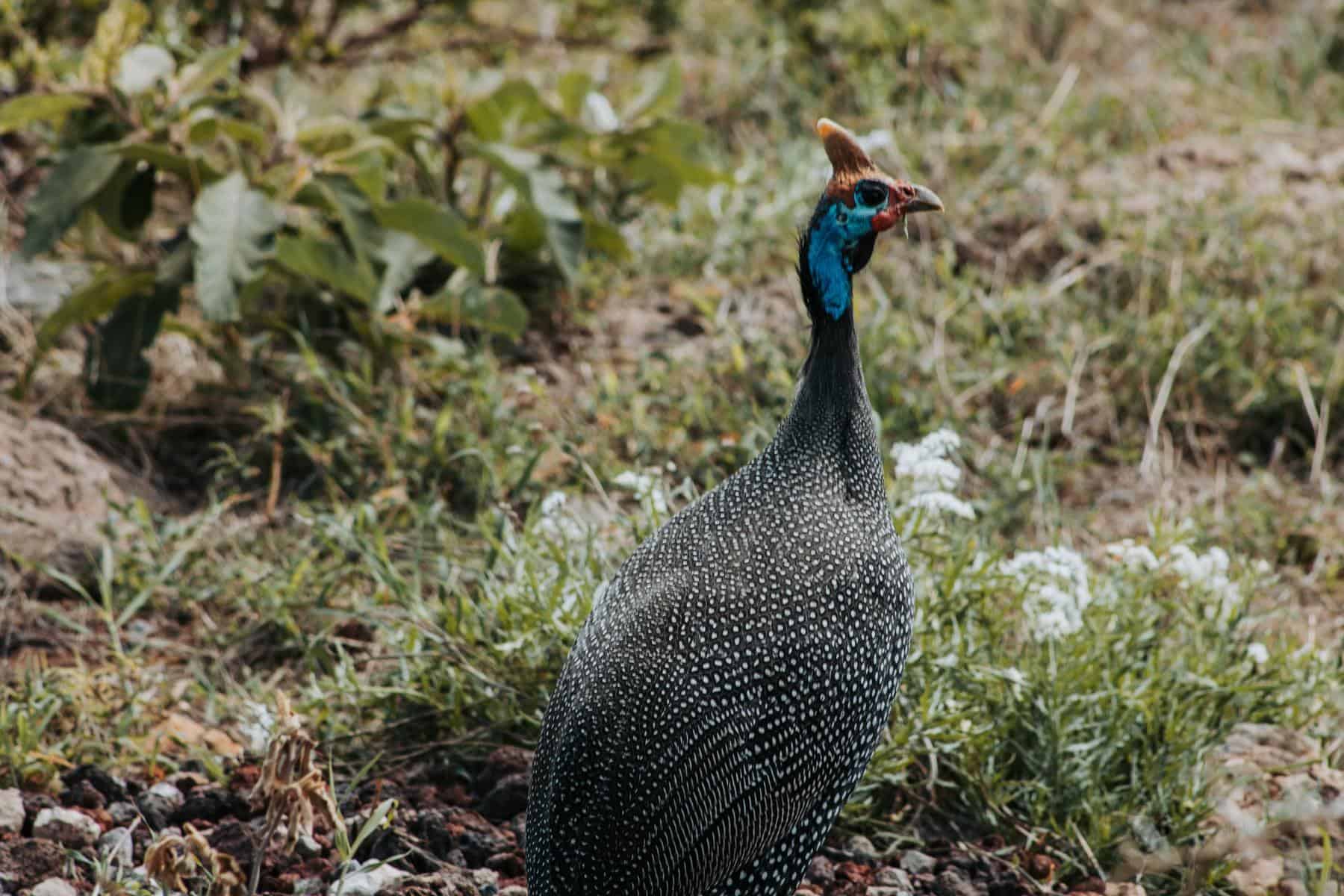
A key difference between them lies in their head and neck areas though which are very clearly bare skin as opposed to being covered in feathers for the sake of regulating their temperature easier.
Their skin is usually blueish, reddish and blackish, which is why they’re also often times referred to as the clown birds. They are known for having a relatively oval shape of the body, and because of their short tails and rounded wings they’re very unique looking to say the least.
Their beaks are known for being very short and curved, and on top of that they differ greatly between the male and the female as the males have way larger beaks than any female fowl out there.
As far as their voices go, you will find that each and every Guinea Fowl out there has its very own vocalization, to the point where you can easily tell which fowl has called out for you and which hasn’t just from the sound alone.
The Aggressive Nature of the Guinea Fowls
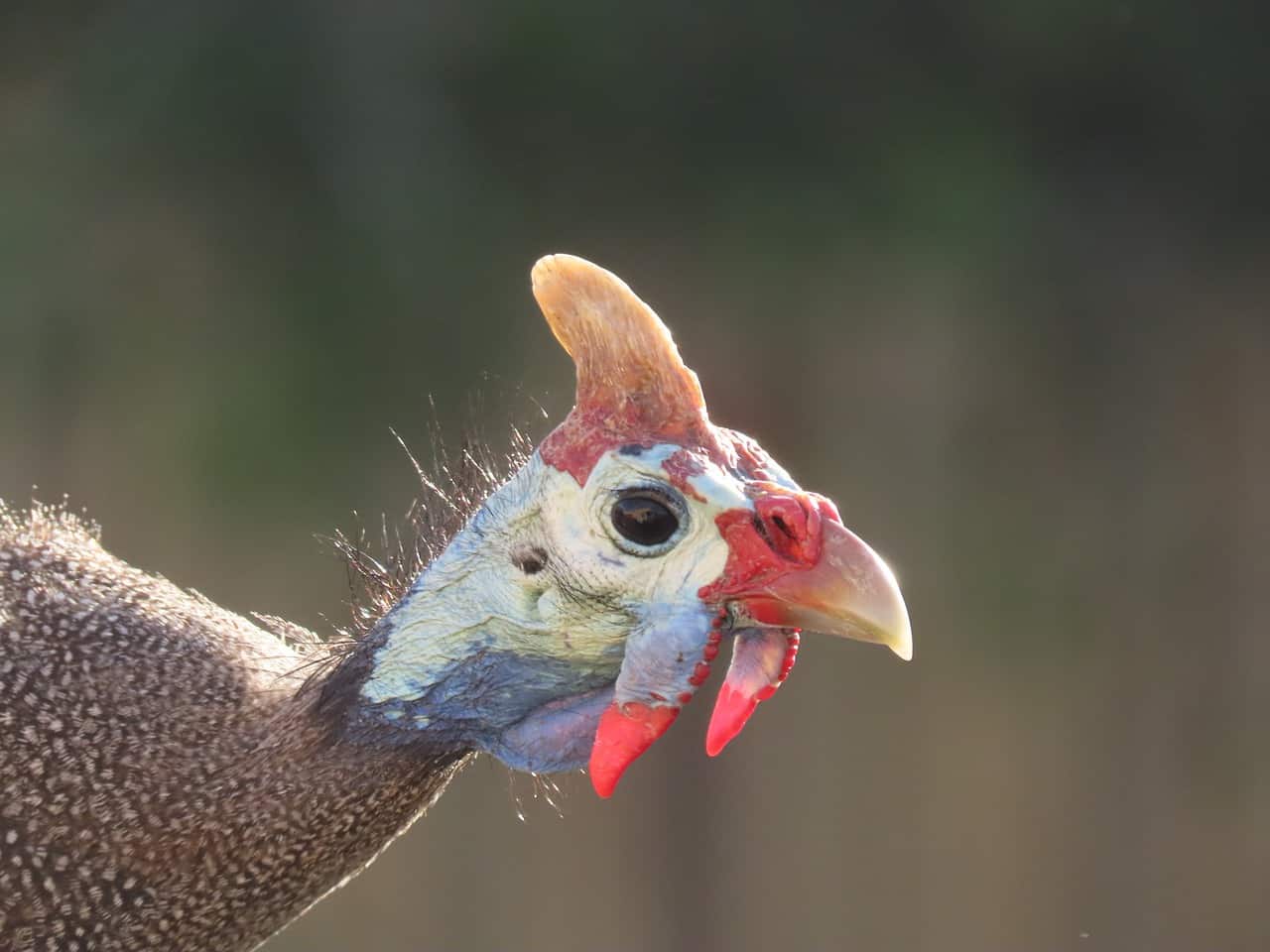
The funniest part about the Guinea Fowls is that despite being very aggressive creatures, they are also some of the most social birds we’ve ever seen.
These birds will literally chase down the person that has been there for many years feeding them and taking care of them while also never actually leaving the other Guinea Fowls regardless of how hard you try to separate them. On top of that, if one actually does stray away from the flock, the rest will follow to make sure that they all stay in line.
While they can co-exist with pretty much any other bird out there, you will need to keep a close eye on the male Guinea Fowls as they can easily end up becoming too aggressive and territorial, attacking everything in sight especially roosters and pretty much any other male bird out there.
They are most often times the abusers not the ones being abused, and while they do have small beaks, they can easily end up killing other birds by pecking them too hard.
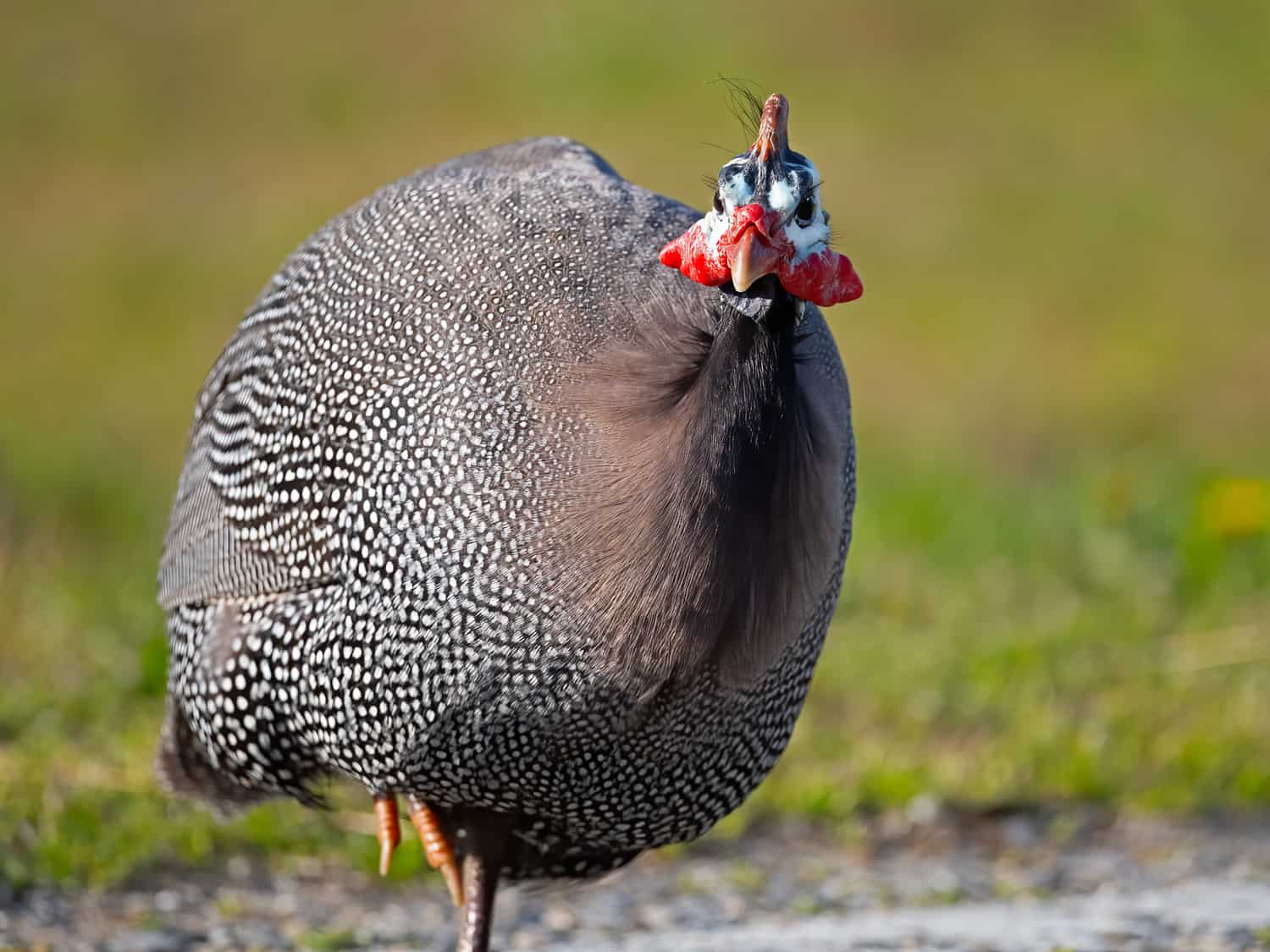
They have not been domesticated all the way either which means that you will often times find them roosting in random places such as trees for example or any other high place that they can come across in their coop.
Strangely enough, they also appear to be very afraid of the dark, so if you want to avoid them panicking and attacking one another we recommend that you keep them in relatively well-lit areas.
Just know that if you want to keep them in constant confinement then you will need to give them at least 3 square feet to walk around in per bird so as to make sure that they don’t get too anxious and they end up attacking one another.
Remember the fact that you are taking care of an undomesticated bird over here not a chicken, the Guinea Fowl needs to be free in order to not be stressed out and if you want them to thrive you will need to give them plenty of space to run around in.
For the most part they are monogamous and they will mate for life when out there, which is why you shouldn’t expect them to go from bird to bird when the season comes. We recommend that you keep the male to female ratio of around 1:5 for the most part, although you can end up with a few more females than males and still be in the green.
How to Train Your Guinea Fowl
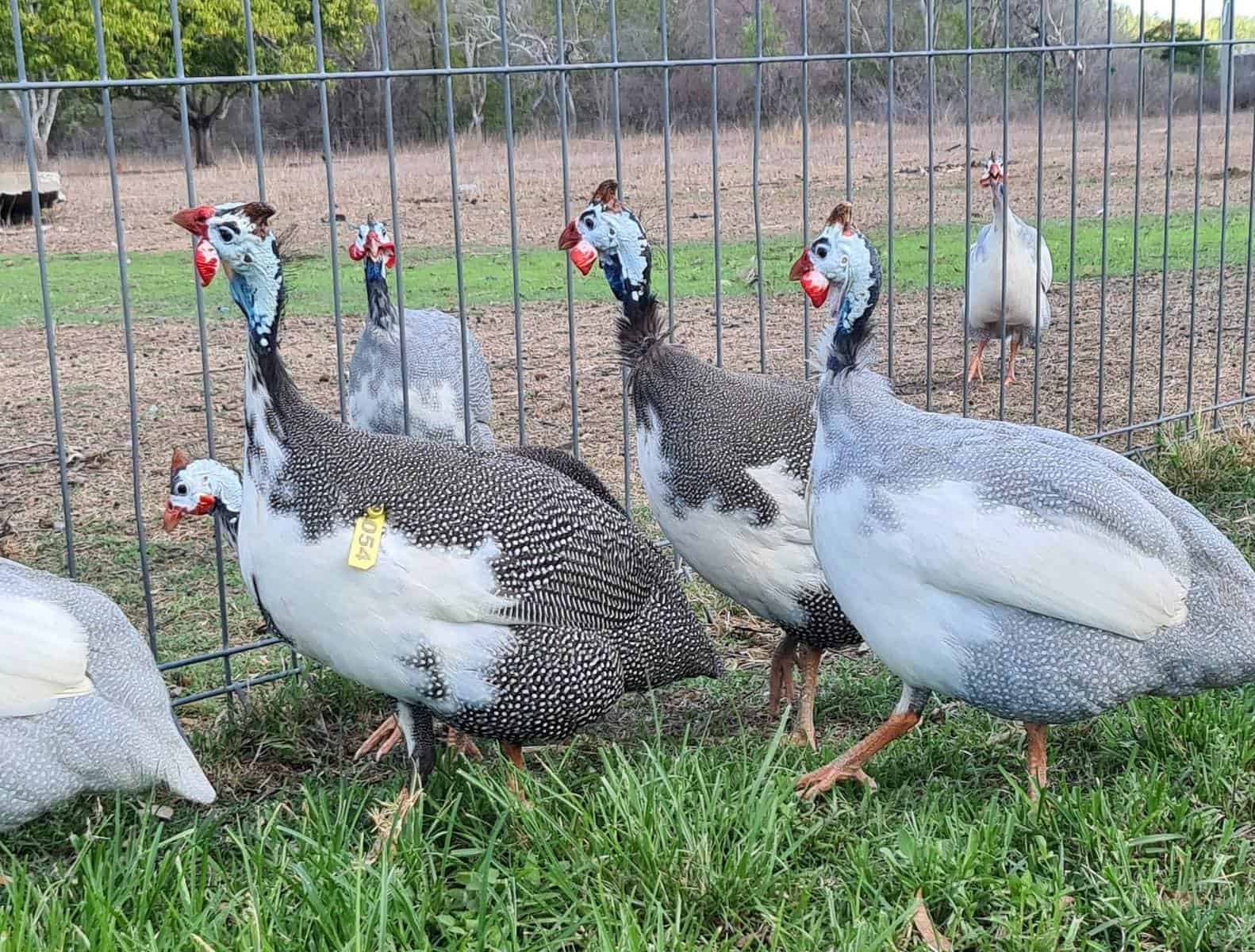
First off you need to remember the fact that the Guinea Fowl is not your ordinary chicken which means that you will actually need to put in a lot of work if you want to successfully train it. This also means that you will need to get them started from a young age, as you will a hundred percent fail if you are dealing with a one-year-old fowl by then.
We recommend that you get started by releasing them every day at the same time from their pen. This repetition will immediately get spotted by the flock birds which will result in you pretty much training them all by then.
You can start off small though if you see that the flock itself is not willing to listen by releasing them only one bird at a time. Chances are that they won’t be moving around too much since they are instinctively never going to stray away from the rest of the flock.
The more you do it though the easier it will get as Guinea Fowls are quite intelligent so they’ll pick up on their new routine and before long they will all run out of the pen together and run around without you needing to do anything about it in the first place.
Health, Diet and Special Care for the Guinea Fowls
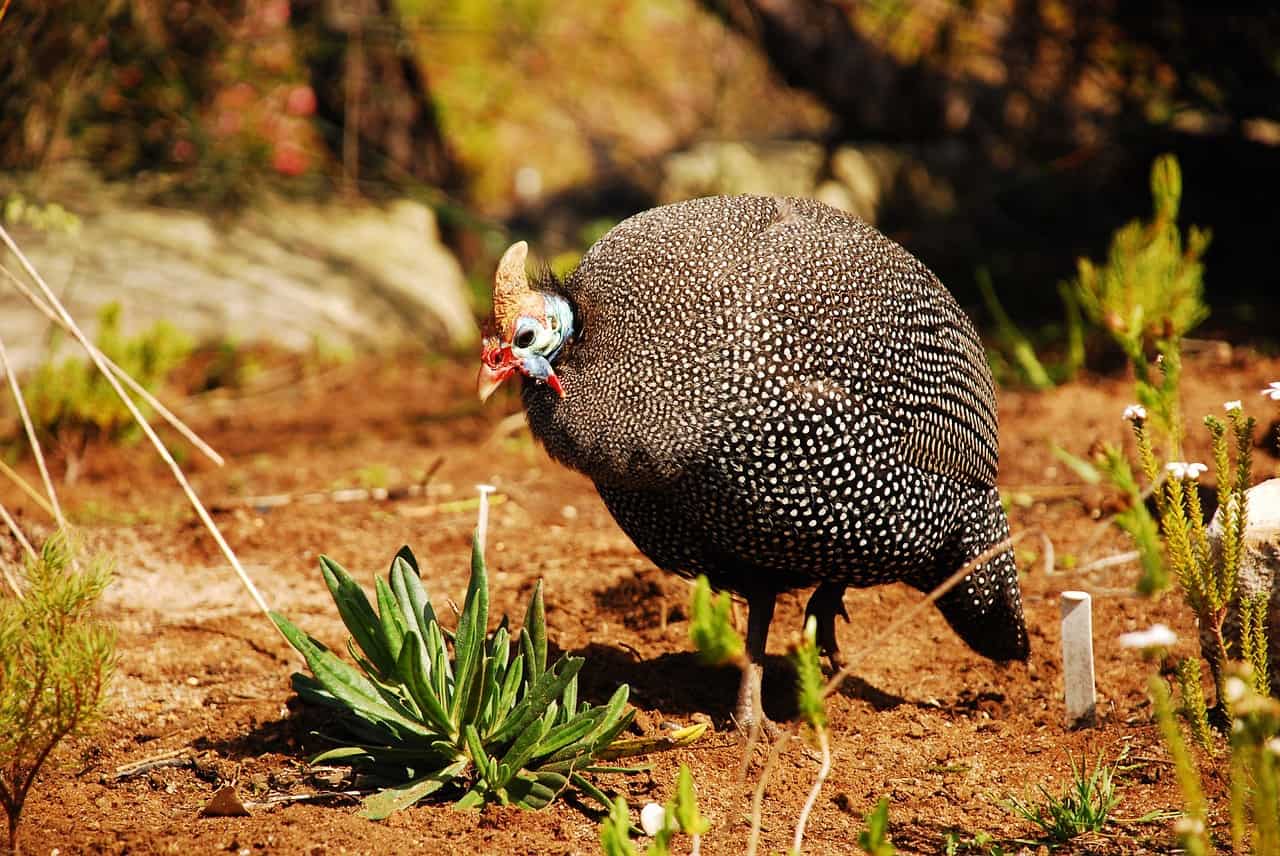
The best part about owning a Guinea Fowl is definitely the fact that they have managed to survive on their own in the wilderness for the most part which is why they’re pretty much safe from any and all health issues that come with most other birds out there.
They are especially hardy when it comes to bad climates and while they may not be particularly fond of wet or cold snow, they can handle it all the same regardless of the time of the year.
They are very fond of warm climates though which is due to the fact that they originate from Africa, so just make sure that they have plenty of water to go around and they’ll be able to sleep through the hottest summers with ease.
Should You Get a Guinea Fowl?
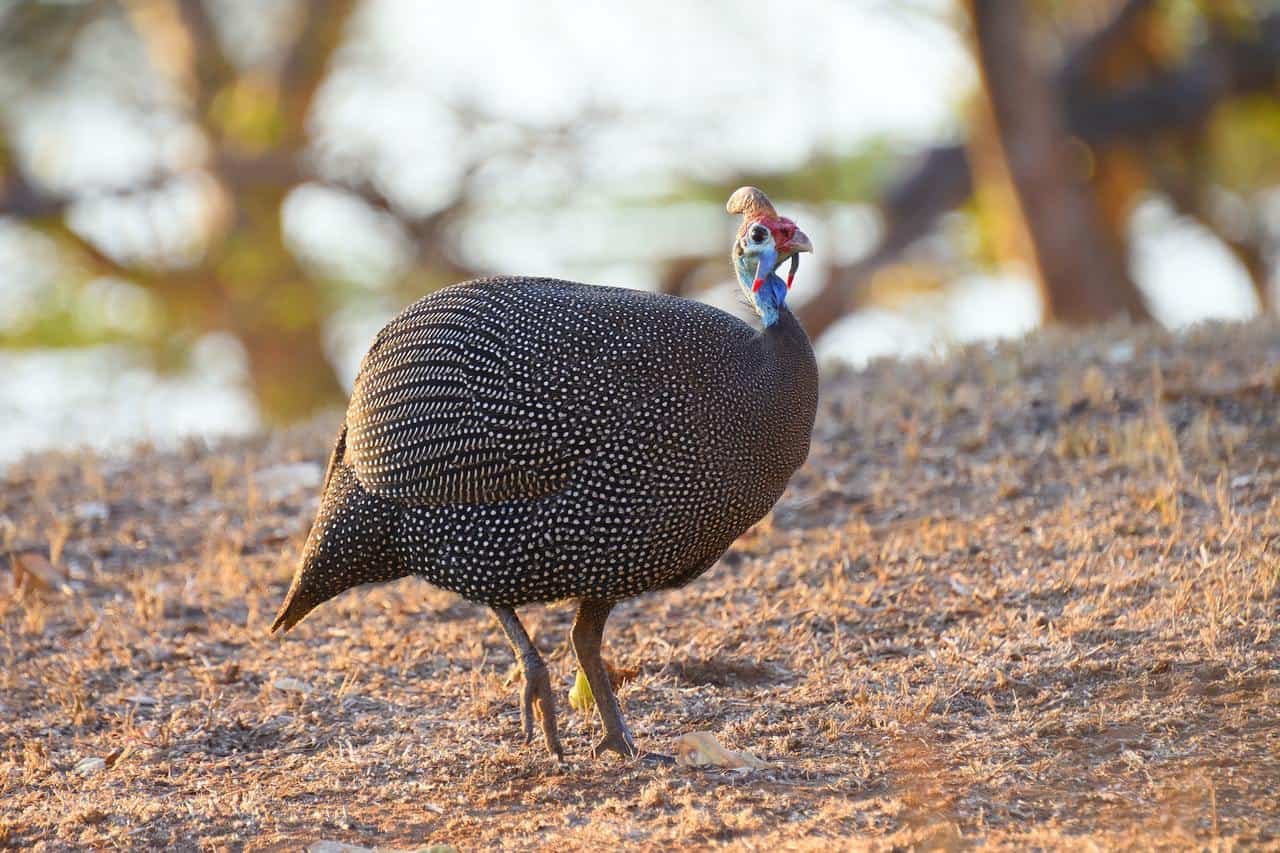
Despite the fact that they have been kept around in captivity for thousands upon thousands of years now, the funniest part about the Guinea Fowl is definitely the fact that they have yet to be properly domesticated simply because of their instinct which says to never fully trust humans.
They will go absolutely mental if you pick them up and they will not sit on your lap no matter how hard you try.
Because of this, you can already tell the fact that the Guinea Fowl is not exactly the ideal pet for a family, especially one with young children as they can start pecking away at anyone that isn’t willing to fight back.
But, one of the better aspects of owning a Guinea Fowl is the fact that they can pretty much rid you of any ticks, insects, small snakes and even rodents with ease. We would even argue that they’re better at it than most other birds out there.
So, should you get a Guinea Fowl? Honestly, we can’t say for sure, if you like the idea of owning an alarm caller that will pretty much never stray away from the flock then sure, go for it, but if you’re looking for a nice pet because of its unique look, just know that it will never fully give in and allow you to treat it like any other chicken out there.
Fun Facts About Guinea Fowls
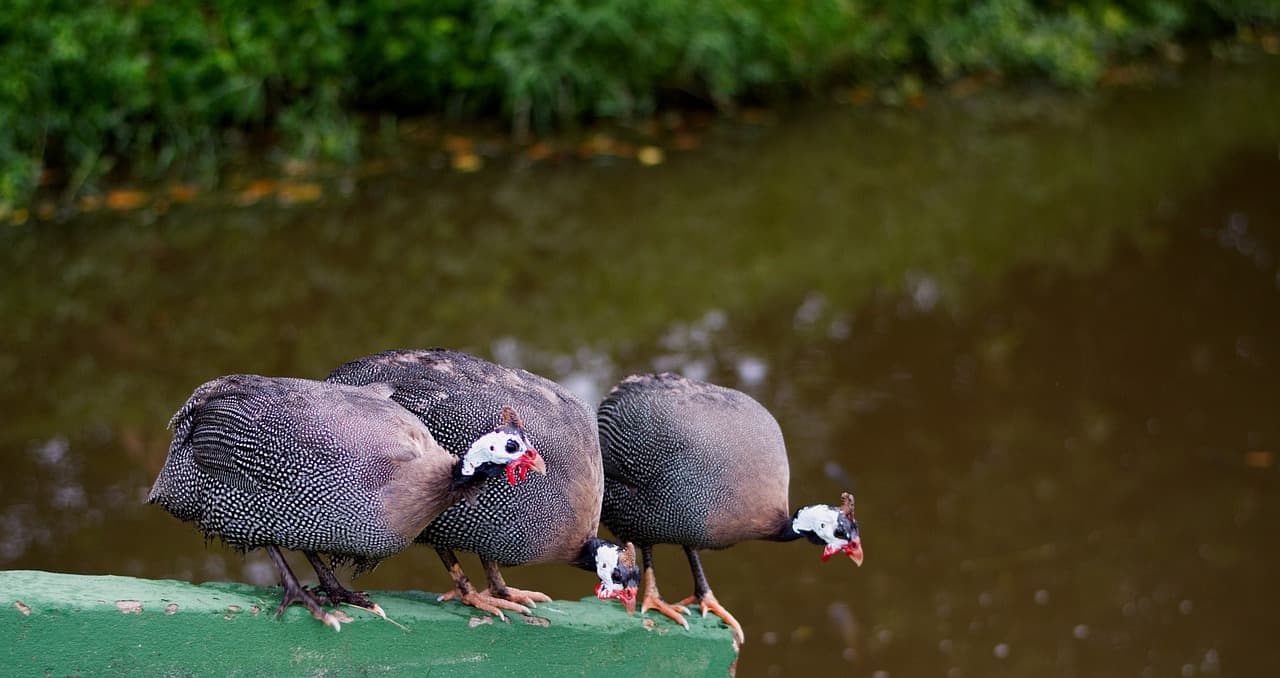
In this short segment we will give you a brief listing of every fun fact we could think of that we didn’t want to spend too much time on during the rest of the guide.
For example, did you know that guineas don’t know any boundaries? They are going to walk on their paths regardless of what’s ahead of them, and since they are relatively aggressive creatures, they will not hesitate to attack anything that stands in their way.
On top of that they are very chatty creatures, and while each of them sound different, the males do have a certain “chi chi chi” sound to them while the hens typically sound like they’re saying “come back” most of the time.
Guinea Fowls also make for great flock protectors as they will call you whenever a predator comes close to them and they will even start chasing away any potential threats if they see that they’re approaching them.
Another interesting fact about them is the fact that because of how rowdy they are, the guinea fowl will generally make for very poor mothers since they take as many as 28 days to hatch a full cycle and besides that they will also avoid nesting boxes for the most part, opting for natural nests that they can find in public instead.
Last but not least we would like to mention the fact that in case you didn’t know by now, Guinea Fowls can actually fly, unlike chickens.
That’s right, Guinea Fowls are pretty much never going to stop exploring the world around them, and this often times results in them flying on top of your house or even flying over the fences to get a better view of whatever they had their eyes on.
Conclusion
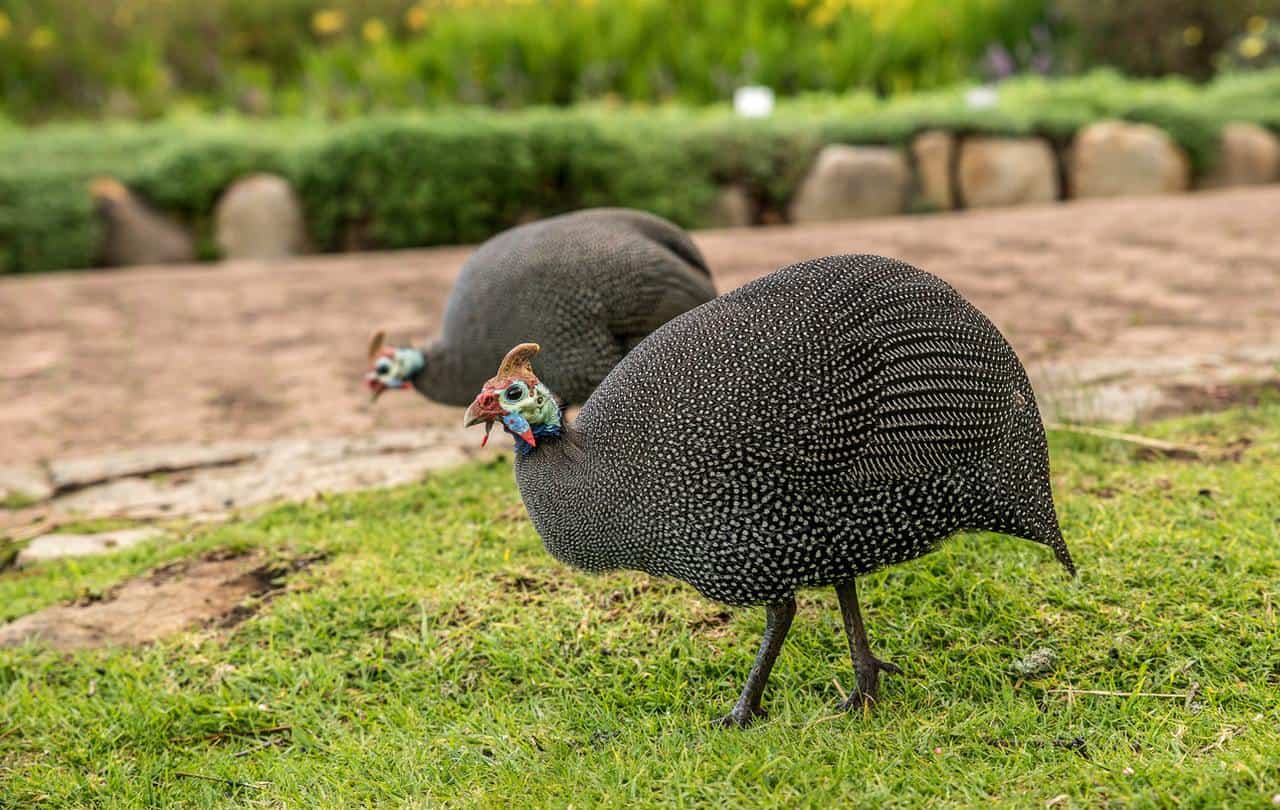
With all of that being said though, we still have a soft spot for the Guinea Fowl even with all of its downsides. It is a very unique bird that has refused to be tamed over the years, it is a wild animal that we have been exposed to for thousands of years and yet we’ve made very little progress as far as domesticating it goes.
Will this change the more of them we get? We can’t say for sure, but what we can say though is that most Guinea Fowl owners are happy with their flocks and they wouldn’t have any other bird running around their yard.

